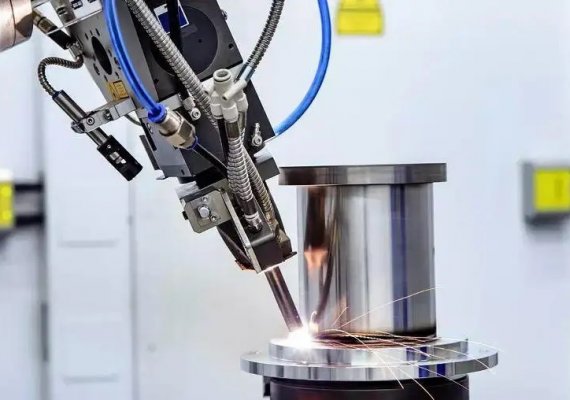False welding is a common welding defect. It seems that the front and rear steel strips are welded together during welding, but in fact, they are not integrated. The strength of the joint surface is low. In the tension and straightening area, the virtual welding seam is likely to cause a belt breakage accident, which has an impact on the normal operation of the production line.
False welding is a common welding defect. It looks like the front and rear steel strips are welded together, but they are not actually integrated. The strength of the articular surfaces is low. Welds have to go through a complex process, especially in the high-temperature furnace zone and the high-pressure tension straightening zone. False welds can easily cause belt breakage and affect the normal operation of the production line.


False welding means that the temperature of the joint surface of the weld is too low during welding, the size of the nugget is small, and the melting degree is not reached. After rolling, it is barely joined together.
Virtual welding means that the surface temperature of the welded joint is too low, the size of the gold nugget is small, and it does not reach the melting level.
The reasons and steps to analyze the virtual welding can be carried out in the following order:
The causes and steps of false welding can be analyzed in the following order:
1. Check whether there is rust, oil stains, and other impurities on the surface of the welded joint, or unevenness and poor contact, which will increase the contact resistance, reduce the current, and make the surface temperature of the welded joint insufficient.
2. Check whether there are impurities such as rust, oil stains, etc. on the surface of the welded joint, or if the contact is uneven or poor, which will increase the contact resistance, reduce the current, and make the surface temperature of the welded joint insufficient.
3. Check whether the overlap of the welding seam is normal. With the reduction of the overlap, the bonding area of the front and rear steel strips is too small, the total stress area is reduced, and it cannot bear the large tensile force, especially the cracking phenomenon on the driving side will cause The stress is concentrated, making the crack larger and larger, leading to fracture.
4. Check whether the weld overlap is normal. With the reduction of the overlap, the bonding area of the front and rear steel strips is too small, the total stress area is reduced, and it cannot withstand a large tensile force, especially the cracking phenomenon on the driving side will cause stress concentration, making the cracking larger and larger, leading to fracture.


5. Check that the current setting character does not meet the process regulations and whether the current setting increases when the product thickness changes, resulting in insufficient current during welding and poor welding.
6. Check whether the current setting does not meet the process requirements and whether the current setting increases when the product thickness changes, resulting in insufficient current and poor welding.
7. Check whether the pressure of the welding wheel is reasonable. If the pressure is not enough, the actual current will be reduced due to excessive resistance. If the resistance exceeds a certain range, it will exceed the limit of current compensation, the current cannot be increased, and the set value cannot be reached. In some cases, an alert will be issued when the system is working properly.
8. Check whether the pressure of the welding roller is reasonable. If the pressure is not enough, the actual current will decrease due to the excessive resistance. If the resistance exceeds a certain range, the current compensation limit will be exceeded and the current cannot be increased to reach the set value. In this case, the system will sound an alarm when it is working normally.
In actual operation, if the cause of the virtual welding cannot be found, the two ends of the steel strip can be cleaned up, the amount of welding overlap, the welding current and the pressure of the welding wheel can be increased, and the welding seam formation state should be paid attention to during welding. Voltage fluctuations prevent the weld from being welded, requiring additional measures.
In actual operation, if the cause of false welding cannot be found, both ends of the steel strip can be cleaned, the welding overlap, welding current, and welding wheel pressure can be increased, and the welding state should be paid attention to during the welding process. If a control system problem or grid voltage fluctuations cause the weld to fail, additional measures are required.
Like this page? Share it with your friends!


